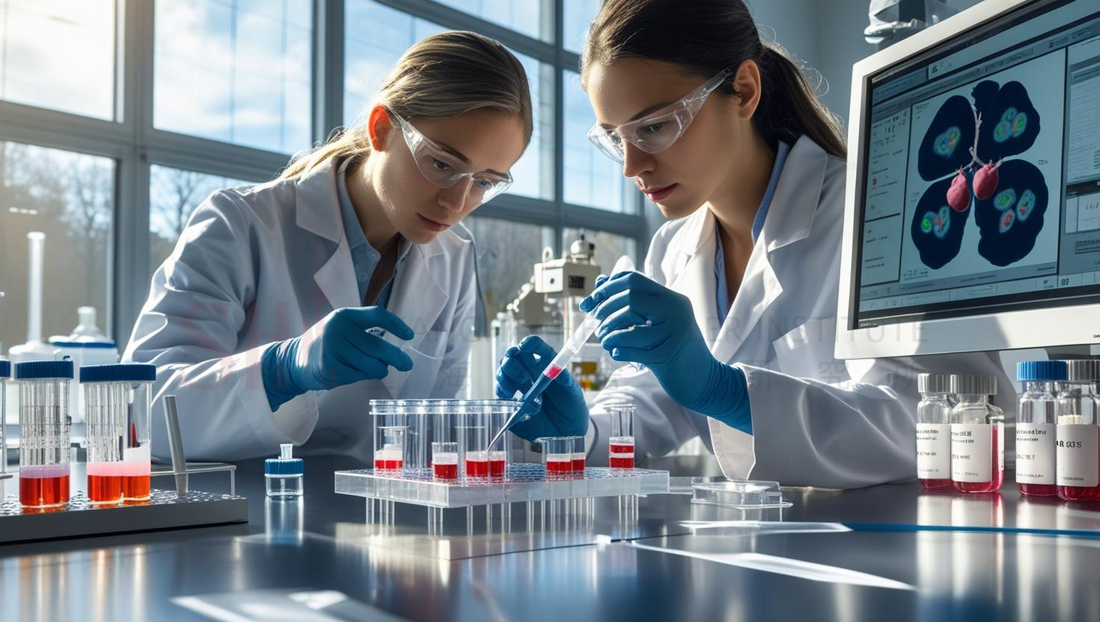
Cardiotoxicity Screening via hiPSC‑Derived Cardiomyocytes
Share
Advances Led by Prof. Dr. Jürgen Hescheler at the University of Cologne
Introduction
Prof. Dr. Jürgen Karl‑Josef Hescheler, Director of the Institute for Neurophysiology at the University of Cologne since 1994, is a globally recognized pioneer in stem cell electrophysiology and cardiac differentiation. Notably, he performed the first electrophysiological characterization of embryonic stem cell–derived cardiomyocytes and was the first researcher in Germany authorized to work with human embryonic stem cells JRC Publikationen+11physiologie.uni-koeln.de+11Wikipedia+11.
Development of Predictive Cardiac Toxicity Models
-
In collaboration with Agapios Sachinidis and colleagues, Hescheler contributed to the development of a robust in vitro cardiotoxicity testing platform. This method uses human-induced pluripotent stem cell–derived cardiomyocytes (hiPSC‑CMs) to assess the impact of pharmaceutical and cosmetic compounds on heart function, particularly beat patterns and viability SpringerLink+4JRC Publikationen+4SpringerLink+4.
-
Tobacco derivatives and cosmetic chemicals such as triclosan (TS), kojic acid (KJA), and triclocarban (TCC) were evaluated. The testing protocol measured impedance-based cell index, LDH leakage, ATP content, and gene expression changes, pinpointing early biomarkers of cardiotoxicity in hiPSC‑CMs SpringerLink+1JRC Publikationen+1.
Genomic Biomarkers & Cardiotoxicity Index Development
-
The team introduced the CTI84g cardiotoxicity index, a metric based on deregulation of 84 genes associated with anthracycline-induced cardiac stress.
-
TS exposure at concentrations as low as 10 µM altered key cardiomyocyte gene expression. NPT (at 200 µM) showed more significant toxicity, whereas KJA remained non-toxic under the tested conditions SpringerLink.
Translating Research Through Collaborative Consortia
-
Hescheler’s institute coordinated major European endeavors, such as CRYSTAL, ESNATS, DETECTIVE, and iPS & adult bone marrow cells for cardiac repair, funding standardized methodologies for cryobanking, in vitro toxicology, and stem cell therapy development Wikipedia+9physiologie.uni-koeln.de+9p7neuro.com+9.
-
These projects facilitate validation of hiPSC‑based cardiac toxicity assays, forming the framework for regulatory safety standards across Europe.
Broader Scientific and Clinical Impact
-
The data generated via these hiPSC‑CM platforms inform safer cosmetic ingredient assessment and drug development pipelines—ensuring human-relevant testing without animal models SpringerLink.
-
Through continuous publication and high annual citations, Hescheler’s work maintains influence on stem cell safety and policy worldwide Scilit+6Research.com+6p7neuro.com+6.
Summary Table of Key Contributions
| Focus Area | Achievements & Impact |
|---|---|
| Cardiotoxicity Modeling | Innovative hiPSC‑CM in vitro assay measuring electrophysiology, viability, biomarkers |
| Gene Expression Biomarkers (CTI84g) | Defined genomic signatures predictive of cardiotoxicity—used for chemical safety |
| EU Research Leadership | Head of CRYSTAL, ESNATS, DETECTIVE consortia and regulations-based testing development |
| Regulatory & Ethical Influence | Supports non-animal testing methods per EU cosmetic regulation |
| Academic Recognition | Over 1,000 citations/year, H-index > 90 across disciplines |
Conclusion
Prof. Hescheler’s integration of hiPSC-derived cardiomyocytes, functional genomics, and high-throughput cardiac testing has revolutionized drug and cosmetic safety evaluation. His leadership in European research consortia ensures the translation of stem cell electrophysiology into robust, ethically aligned testing standards for regulatory and clinical applications.
